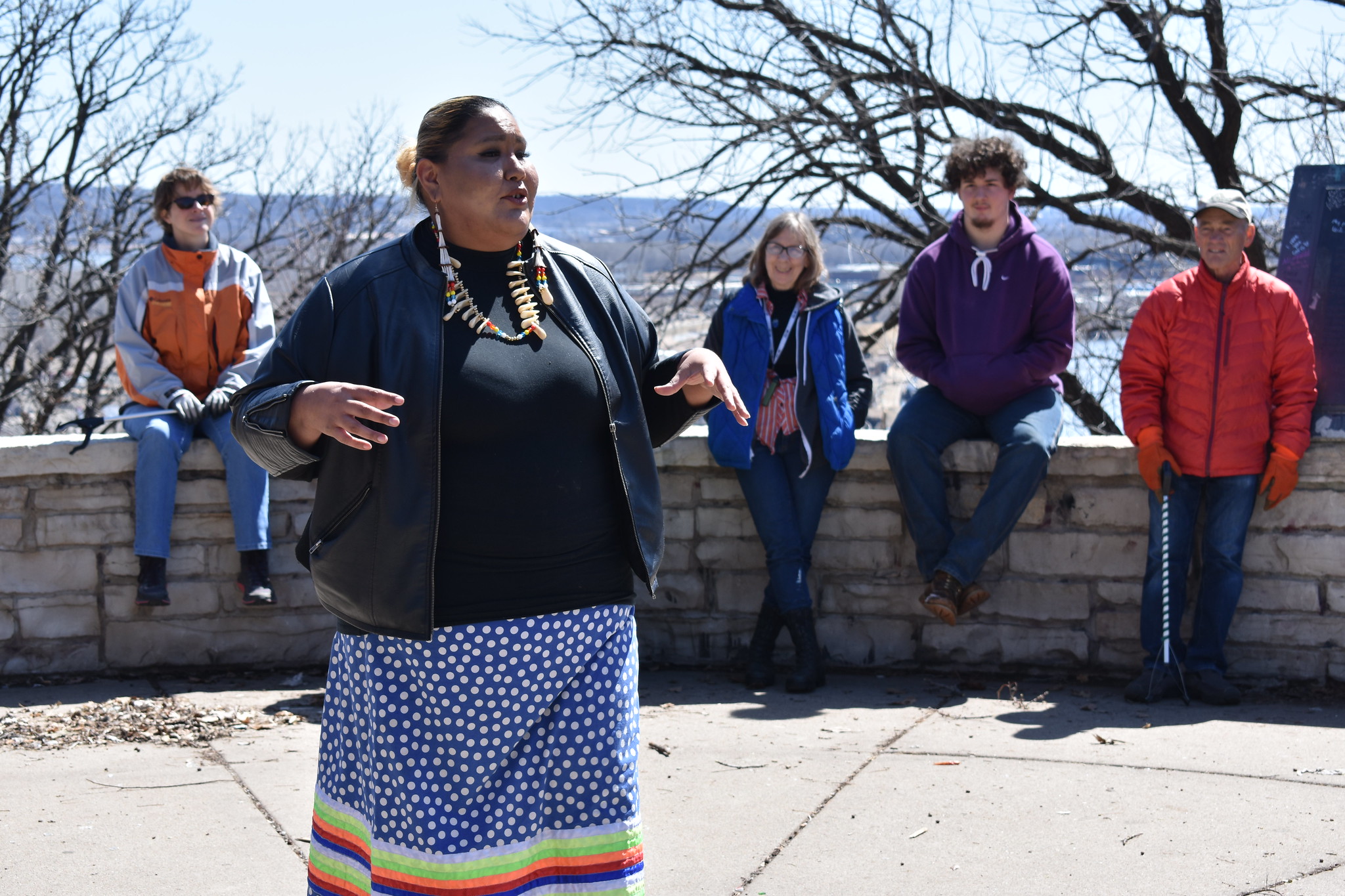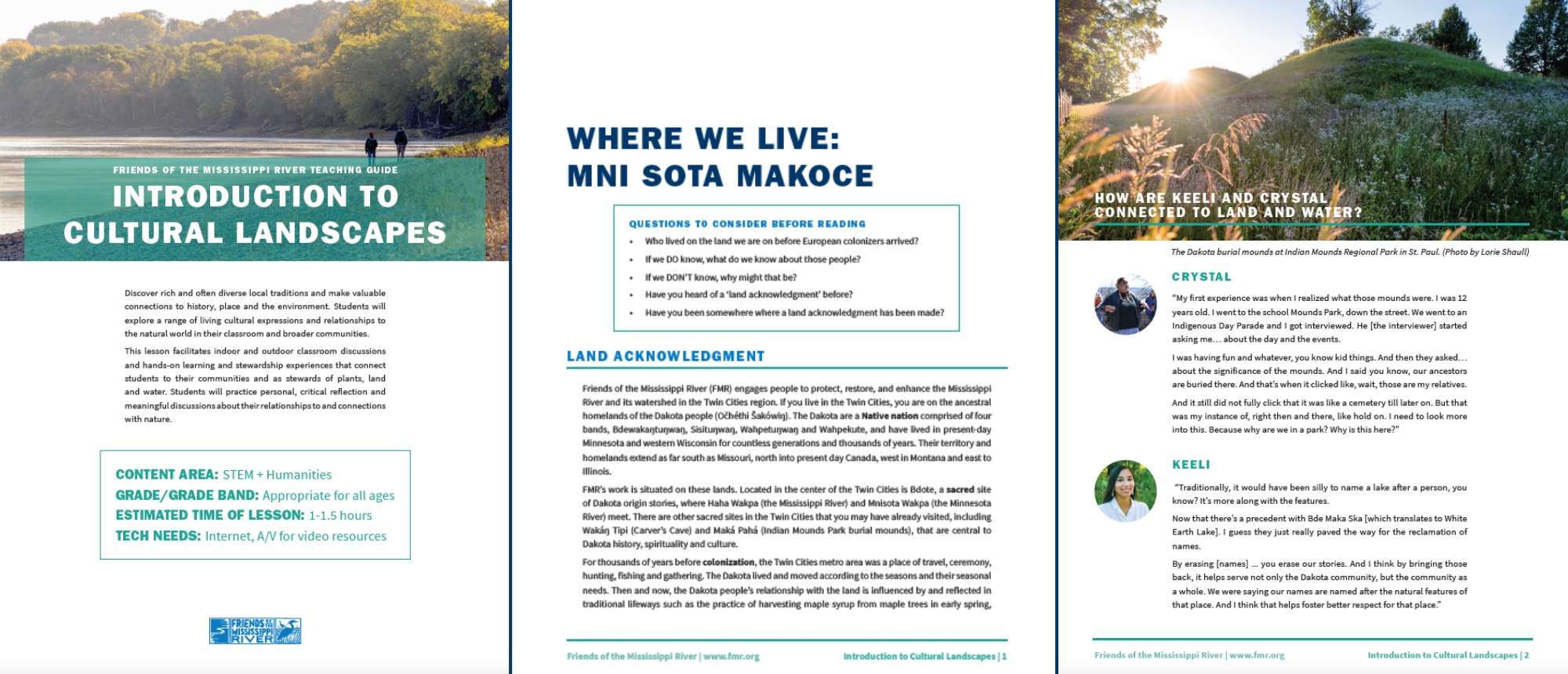Now available: FMR's enhanced Cultural Landscapes lesson

Our updated teaching guide now features many community voices and water stories, including a new video with Crystal Norcross, Dakota steward and advocate of the Dakota burial mounds at Wic̣aḣapi in St. Paul.
FMR has been engaging K-12 classrooms in lessons on watersheds, pollution, erosion and other environmental topics for over 15 years. In recent years, we've been talking more about people and relationships to the river. Now, we're proud to present and share our enhanced Cultural Landscapes curriculum.
While created with teachers and other educators in mind, the curriculum is available for anyone to download via the form below. (FMR staff can also vouch that it's engaging for adults, having enjoyed the lesson and the discussions it inspired over a staff lunch.)
Building on the work of former intern Elia Engberg, the lesson encourages and supports students to reflect on their cultural heritage or identities and relationships with land, water and stewardship. The curriculum affirms and honors the ancestral homelands of the Dakota people (Oceti Šakowiŋ). And its images, interactive content and movement activities have successfully sparked conversations about the importance of many FMR restoration sites to the Dakota, such as Bdóte, a sacred place of Dakota creation stories where the Mississippi River (Haha Wakpa) and the Minnesota River (Mní Sota Wakpá) meet. (Learn more about confluences from FMR and the Memory Map.)
Since the pilot curriculum's release in spring 2021, many youth and important partners have provided feedback and suggested ways to make it more engaging and inclusive.
We've incorporated many of their suggestions thanks to a grant from the Cargill Foundation and the Minnesota Humanities Commission.
For the enhanced curriculum, partners like Laura Jeffery Academy and Dowling Elementary School helped us reshape the lesson to include more cultural perspectives and community knowledge of FMR stewardship sites. Through collaborative relationships and interviews with community members, Dakota, Ojibwe and others, we’re integrating more voices and experiences to reflect the many communities connected to the Mississippi River or Haha Wakpa.
We're particularly excited to share and include the story and video interview with local Dakota community activist Crystal Norcross, who took it upon herself to make Wic̣aḣapi (formerly Indian Mounds Regional Park) in St. Paul more notable and rightfully treated as a sacred burial site for Dakota and gathering space for many tribes. (Produced by Courtney Cochran, Crystal's story is available to view as part of the curriculum.)
The curriculum itself is also reorganized and redesigned with educators in mind, featuring a more streamlined and engaging user-friendly format.

We formatted the updated curriculum so that teachers and educators can easily learn, share handouts and lead activities with their students. In the package, you'll find a teaching guide with a lesson plan, additional activities, accompanying materials, resources and state standards information.
We hope this curriculum is helpful for all educators and the communities we serve and further supports equitable and inclusive discussions around the rich and complex cultural connections we all have to the land and river.
We look forward to working with our many partners to continue to reshape our lessons and increase access to STEM education and teacher training for years to come. We're currently revising several curriculums on watersheds, erosion and invasive species. We look forward to announcing them in our e-newsletter in 2024.
Complete the form below to download the curriculum or learn more about FMR's free virtual and in-person education and volunteer opportunities for K-12 groups and individual youth. Questions? Reach out to the FMR education team at education@fmr.org.